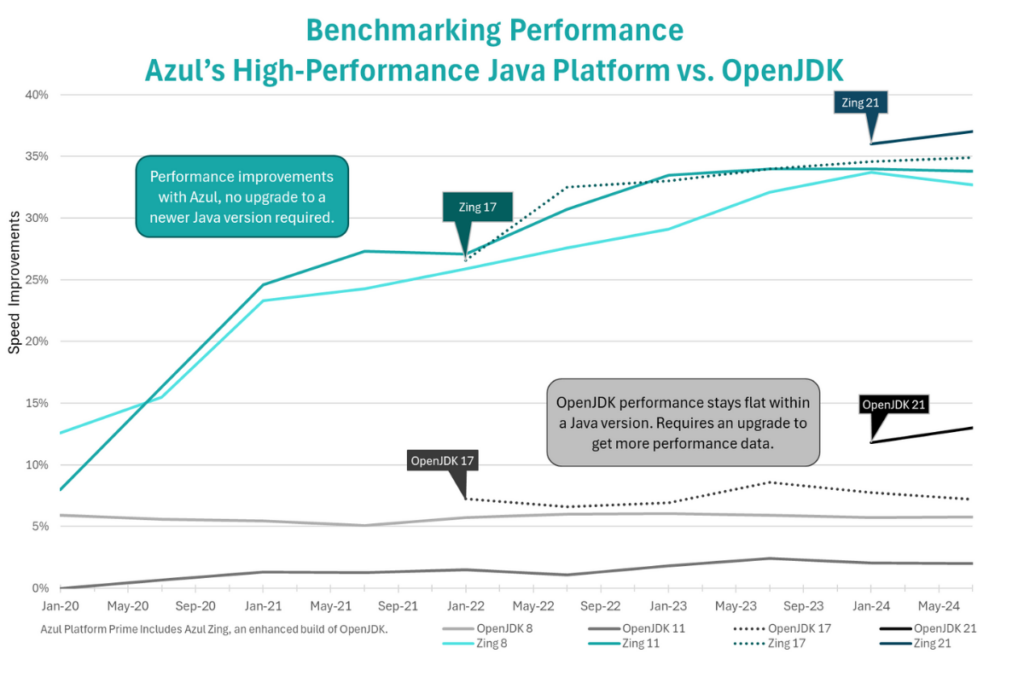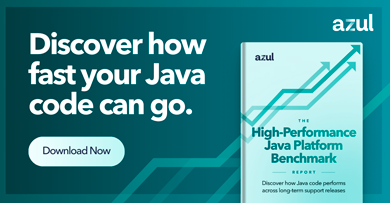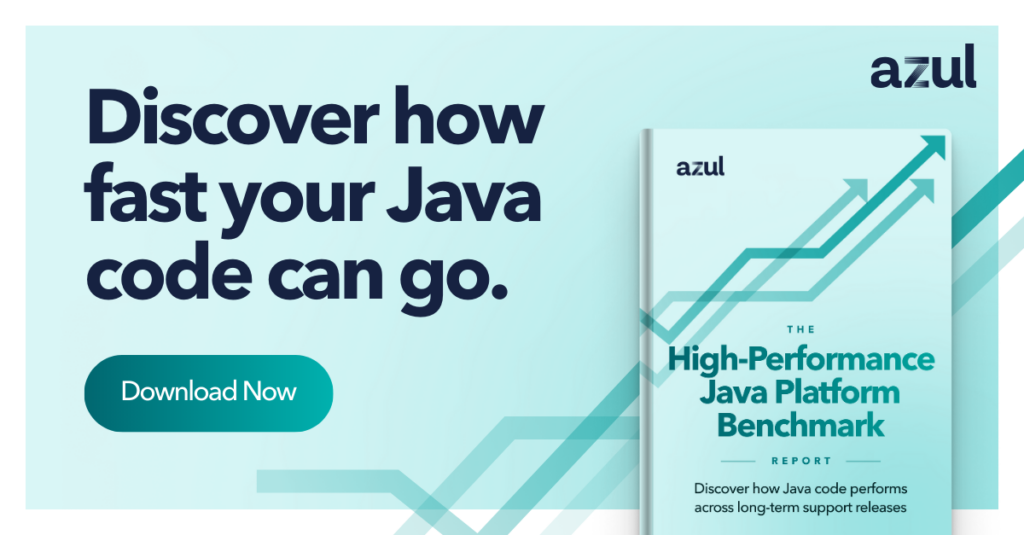
Azul’s Java Performance Engineering Lab continually tests the code speed of Azul Zing’s distribution and other OpenJDK distributions in the market. A Java LTS release impacts Java application performance for Zing and other OpenJDK distributions. Each performance benchmark is then compared against the previous benchmark.
Azul’s Performance Engineering Lab has conducted tests twice a year since 2020 to evaluate all the Java LTS releases and subsequent security releases to benchmark their performance against Java 11.0.6 as a baseline. Based on recent performance testing – Azul achieved an average 37% performance boost compared to other OpenJDK distributions (source).
In the chart below, the first thing that jumps out is that Azul Platform Prime is consistently faster than OpenJDK. Over the four-and-a-half years represented in the chart, the gap in performance gets wider over time as new Java versions are released. Prime is built on OpenJDK, optimized with additional features to make it run faster and more efficiently.

So… What’s the Big Deal?
What is most interesting is what happens between Java version releases.
When OpenJDK version 21 was released in September 2023, it was significantly faster than version 17. But version 17 is essentially the same speed now as it was when it was released in January 2022.

Azul Zing 21 was also faster than Zing 17 when it was released. However, Azul continued to optimize Zing 17 throughout its lifetime, and today it is much faster than it was when it was released.
In other words, you need to upgrade to a new Java version to see application performance improvement with OpenJDK, but you can see improved application performance with Zing without upgrading your Java version.
The next LTS will be JDK 25 in September 2025. What do you think performance will look like then?
So what makes the performance better?
Azul Platform Prime includes Azul Zing, an award-winning enhanced build of OpenJDK.
With Zing, what you run in production today will run at least 20% faster, without the need to change or recompile your code.
With Azul, it doesn’t matter what Java version you run today. Azul customers get immediate performance gains running Java 8, 11, 17 or 21, without having to upgrade to a new version of Java.
We continue to work with our customers and the Java community to benchmark and increase Zing’s performance to improve how fast your code can go. Zing just keeps getting faster at getting faster.
OpenJDK takes a long time to achieve even modest improvements. When measuring performance improvements across product releases, the velocity of performance increases in Zing is much higher than the gains made in OpenJDK releases.
Most traditional Java runtimes deliver poor performance and waste cloud resources
The Java platform has been a fixture in enterprise computing for many years, but most Java runtimes (based on OpenJDK) fail to meet the increasing demands of enterprise Java application performance and customer experience.
Traditional Java runtimes are not optimized for performance – and unoptimized Java Virtual Machines (JVMs) can lead to wasted cloud resources. In fact, most Java distributions include a common set of challenges for business-critical Java workloads that leads to:
- Inefficient use of resources
- Performance limitations
- Pauses and glitches
- Slow warm-up
- Excessive performance tuning
Azul Zing delivers superior application performance, responsiveness and efficiency. (source: S&P Global Market Intelligence – October 2024)
Try Azul Platform Prime for free today. Azul’s high-performance Java platform helps you maximize efficiency and minimize costs by delivering pauseless garbage collection, faster code, and faster warmup times. Azul Platform Prime is TCK-verified with Oracle’s Technology Compatibility Kit, a test suite that verifies that the Java implementation is compatible with the Java SE specifications. The platform includes Azul Zing Builds of OpenJDK, which is enhanced for superior performance,
consistency, and efficiency.
Azul’s high-performance Java platform uses fewer resources to achieve the same or even greater performance. This efficiency enables organizations to save on infrastructure costs, especially expensive cloud instances. A high-performance Java platform is one tool in your toolbox for lowering cloud costs. Learn more in The High-Performance Java Platform Benchmark Report, available to read for free from Azul.





